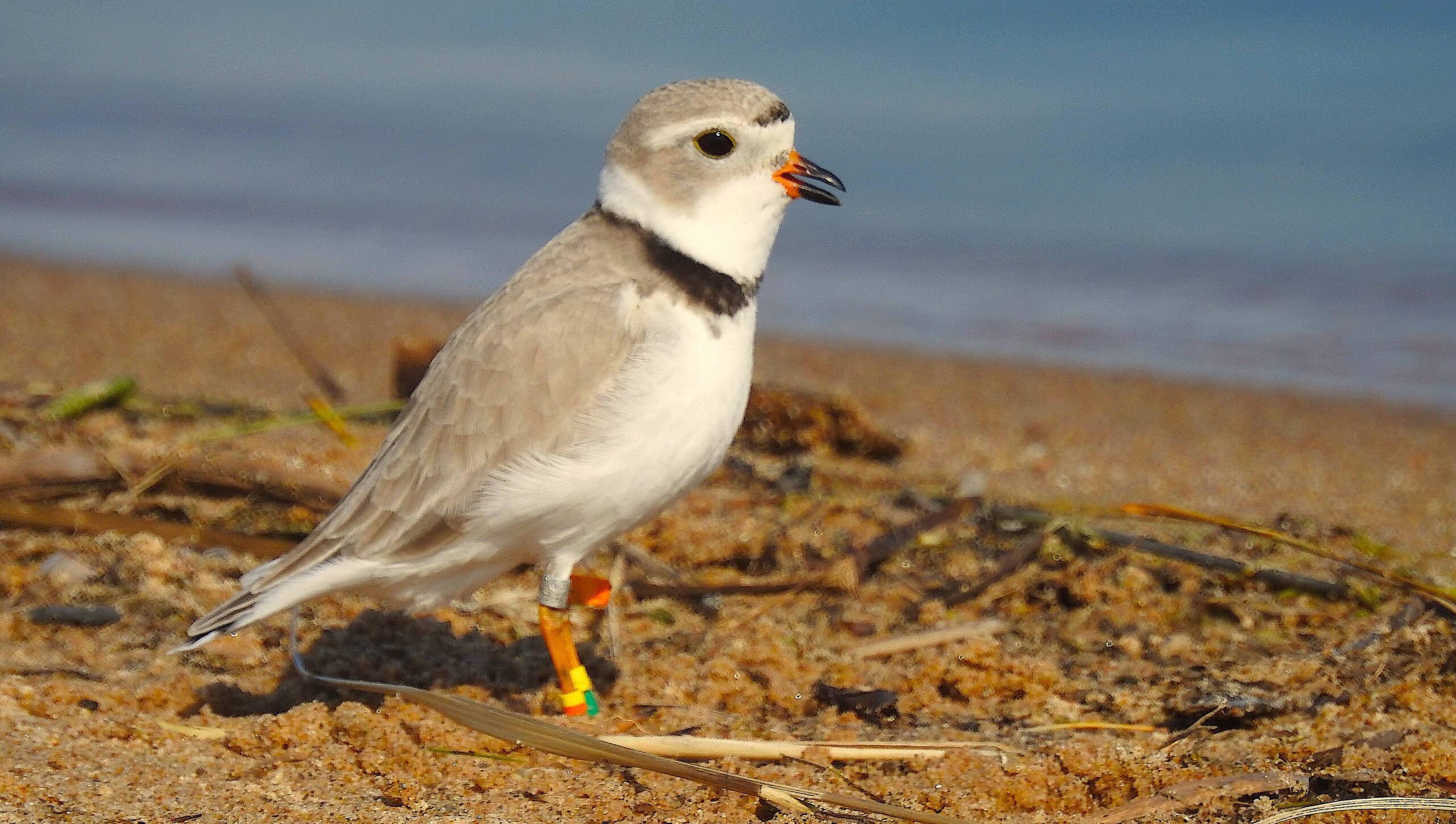Can We Really Protect the Piping Plover?

A new study looked at the long-term mating habits of these birds before and after protective measures went into effect.
Resource managers from North Carolina to Canada have long worked to protect the piping plover, putting barriers around the birds’ nests to keep people and vehicles at a distance. Biologists estimate there are only about 8,000 piping plovers in the entire world.
North Carolina’s coastline represents some of the bird’s favorite beach spots. And the onset of winter could bring even more plovers.
Research Need
Piping plover populations are not only influenced by human activity but also by the climatic and biological environments they encounter throughout the year. The species uses our state’s beaches for breeding from spring through summer, but we don’t know much about the role of this habitat for winter migrating plovers or whether protective measures for the species are effective long-term.
What did they study?
The objective of this study was to understand annual variation of the population of the piping plover, as compared to another beach-nesting shorebird, the American oystercatcher. The two species differ in feeding habitat but share similar nesting habitat. Natural resource managers protect both species from potential human disturbances, but the extent of protection has varied throughout the years and by location.
Using three-decades (1989–2017) of the National Park Service’s breeding monitoring data from two national seashores in North Carolina (Hatteras and Lookout), the scientists created a model to look at potential influences on the nesting populations of both species.
Weather-induced breeding failure often is caused by a storm event and subsequent flooding, so the scientists used rainfall as an important model variable. The scientists also examined satellite imagery to determine available nesting habitat. In addition, the National Park Service provided the research team monthly total counts of recreational visitors at each park since 1988.
Finally, new regulations on off-road-vehicle use and beach recreation have been in place since 2006 at Lookout and 2008 at Hatteras, so the scientists could look at the populations in terms of “pre-” and “post” protections.
What did they find?
Long-term trends showed that breeding for plovers was similar for the two parks, with a steep decline between the mid-1990s and early-2000s, followed by a recovery.
Hatteras had five times more annual visitors than Lookout, and the team’s modelling revealed: 1) a strong negative relationship between the population size of breeding plovers and human activity, and 2) a positive relationship with protection efforts aimed at reducing disturbances. Breeding and wintering climatic conditions, population productivity, and nesting habitat availability had only weak effects on population size.
Although birds could freely move between the two national seashores, only three out of 108 banded plovers nested at both locations.
In general, plovers from the Outer Banks wintered at lower latitudes, such as the Bahamas, compared to oystercatchers.
Anything else?
Interestingly, American oystercatcher populations showed opposite trends at the two parks. None of the variables that the researchers studied could explain the annual variation in the numbers of oystercatcher breeding pairs.
So what?
Critical habitat for the imperiled piping plover has been a contentious issue along the Outer Banks for years. Populations of beach-nesting shorebirds naturally fluctuate to some extent, but visitors to the beaches may determine the useable habitat for nesting shorebirds. This study’s findings reinforce the value of the Cape Hatteras National Seashore to the plovers’ future.
However, the amount of nesting habitat — areas of dry sand — on barrier islands is dependent on natural processes, principally the extent of washovers from storm events. During the years that hurricanes increased the total amount of available habitat at Hatteras (2002–2006) there also were much fewer visitors at the park, which makes it difficult to separate the climate and human impacts.
Nonetheless, at a time when climate is changing, the role of random events, such as hurricanes, could more strongly shape populations of long-lived shorebird species.
Reading
Kwon, E., Robinson, S., Weithman, C.E., Catlin, D.H., Karpanty, S.M., Altman, J., Simons, T.R., and Fraser, J.D. 2021. Contrasting long-term population trends of beach-nesting shorebirds under shared environmental pressures. Biological Conservation, 260: 109178. https://doi.org/10.1016/j.biocon.2021.109178
Research support was provided by the National Park Service at Cape Hatteras National Seashore.
Lead photo: piping plover, courtesy of NPS/Logan Clark.
BY SARA MIRABILIO
The text from Hook, Line & Science is available to reprint and republish at no cost, but only in its entirety and with this attribution: Hook, Line & Science, courtesy of Scott Baker and Sara Mirabilio, North Carolina Sea Grant.
- Categories:



